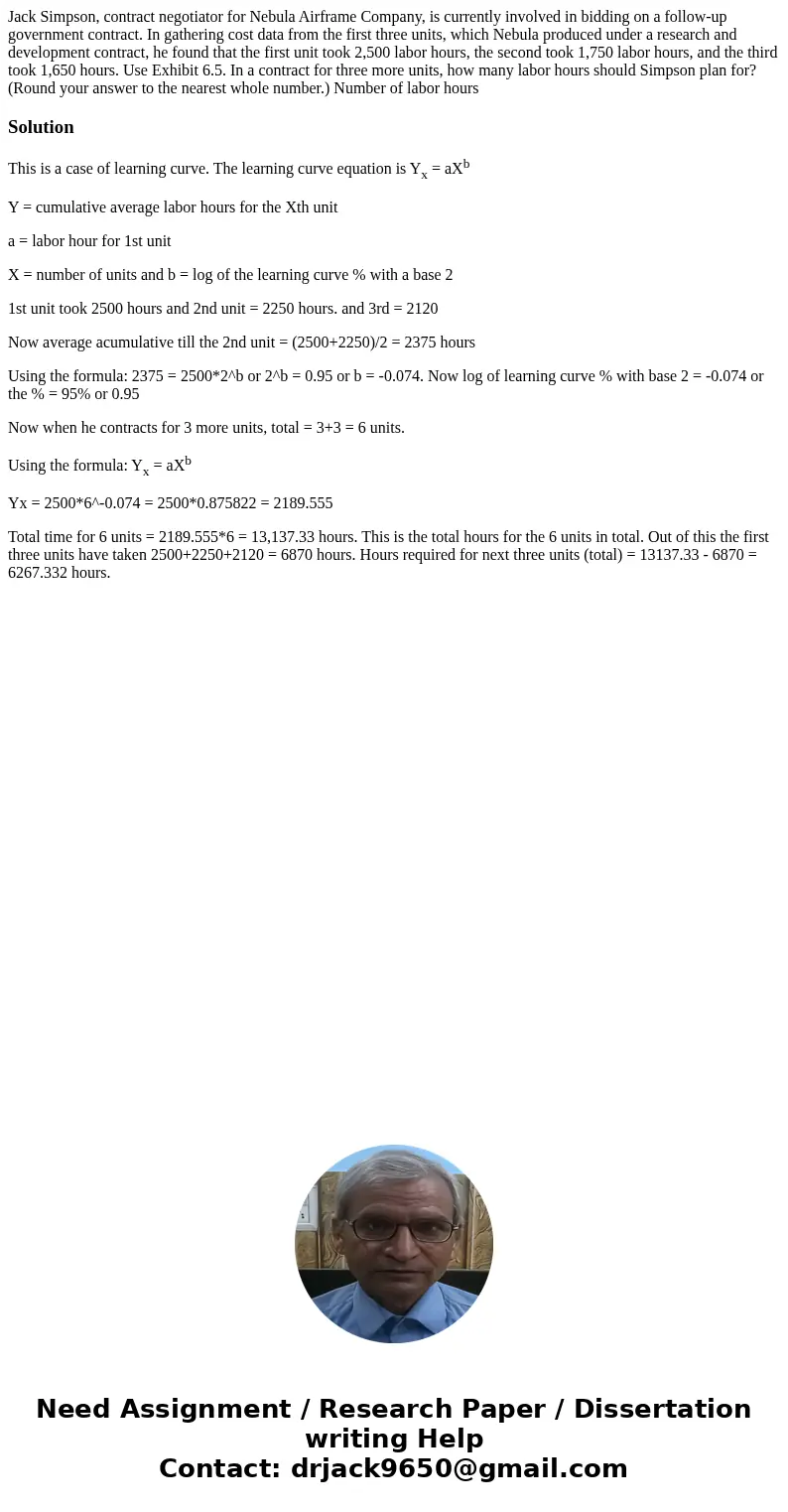Jack Simpson contract negotiator for Nebula Airframe Company
Jack Simpson, contract negotiator for Nebula Airframe Company, is currently involved in bidding on a follow-up government contract. In gathering cost data from the first three units, which Nebula produced under a research and development contract, he found that the first unit took 2,500 labor hours, the second took 1,750 labor hours, and the third took 1,650 hours. Use Exhibit 6.5. In a contract for three more units, how many labor hours should Simpson plan for? (Round your answer to the nearest whole number.) Number of labor hours
Solution
This is a case of learning curve. The learning curve equation is Yx = aXb
Y = cumulative average labor hours for the Xth unit
a = labor hour for 1st unit
X = number of units and b = log of the learning curve % with a base 2
1st unit took 2500 hours and 2nd unit = 2250 hours. and 3rd = 2120
Now average acumulative till the 2nd unit = (2500+2250)/2 = 2375 hours
Using the formula: 2375 = 2500*2^b or 2^b = 0.95 or b = -0.074. Now log of learning curve % with base 2 = -0.074 or the % = 95% or 0.95
Now when he contracts for 3 more units, total = 3+3 = 6 units.
Using the formula: Yx = aXb
Yx = 2500*6^-0.074 = 2500*0.875822 = 2189.555
Total time for 6 units = 2189.555*6 = 13,137.33 hours. This is the total hours for the 6 units in total. Out of this the first three units have taken 2500+2250+2120 = 6870 hours. Hours required for next three units (total) = 13137.33 - 6870 = 6267.332 hours.

 Homework Sourse
Homework Sourse